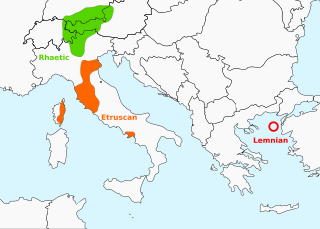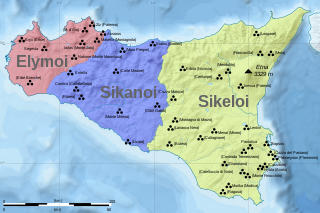 W
WAequian is an extinct Italic language presumed spoken by the people the Romans termed Aequi and Aequicoli living in the Alban hills of northeast Latium and the central Apennines east of them during the early and middle Roman Republic; that is, approximately from the 5th to the 3rd century BC, when they were defeated by the armies of Rome and were subsequently Romanized. As the area was heavily colonized by Latin speakers from Rome, most of the inscriptions from there are in Latin. Two undated inscriptions appear to be in a different dialect, termed Aequian by the scholars with the presumption that in fact they represent the language of the entire pre-Roman tribe. Not enough text survives to deduce any more than that it belonged to the Italic branch of the Indo-European language family.
 W
WEtruscan was the language of the Etruscan civilization, in Italy, in the ancient region of Etruria and in parts of Corsica, Emilia-Romagna, Veneto, Lombardy and Campania. Etruscan influenced Latin but eventually was completely superseded by it. The Etruscans left around 13,000 inscriptions that have been found so far, only a small minority of which are of significant length; some bilingual inscriptions with texts also in Latin, Greek, or Phoenician; and a few dozen loanwords. Attested from 700 BC to AD 50, the relation of Etruscan to other languages has been a source of long-running speculation and study, with its being referred to at times as an isolate, one of the Tyrsenian languages, and a number of other less well-known theories.
 W
WDoric, or Dorian was an Ancient Greek dialect. Its variants were spoken in the southern and eastern Peloponnese as well as in Sicily, Epirus, Southern Italy, Crete, Rhodes, some islands in the southern Aegean Sea and some cities on the south east coast of Anatolia. Together with Northwest Greek, it forms the "Western group" of classical Greek dialects. By Hellenistic times, under the Achaean League, an Achaean-Doric koiné language appeared, exhibiting many peculiarities common to all Doric dialects, which delayed the spread of the Attic-based Koine Greek to the Peloponnese until the 2nd century BC.
 W
WIonic Greek was a subdialect of the Attic–Ionic or Eastern dialect group of Ancient Greek.
 W
WLepontic is an ancient Alpine Celtic language that was spoken in parts of Rhaetia and Cisalpine Gaul between 550 and 100 BC. Lepontic is attested in inscriptions found in an area centered on Lugano, Switzerland, and including the Lake Como and Lake Maggiore areas of Italy.
 W
WMessapic is an extinct Indo-European language of the southeastern Italian Peninsula, once spoken in Apulia by the three Iapygian tribes of the region: the Messapians, the Peucetians and the Daunians. Messapic became extinct following the Roman conquest of the region. It has been preserved in about 600 inscriptions written in an alphabet derived from a Western Greek model and dating from the mid-6th to the late-2nd century BC.
 W
WNorth Picene, also known as North Picenian or Northern Picene, is an ancient language, believed to have been spoken in part of central-eastern Italy. The evidence for the language consists of four inscriptions dating from the 1st millennium BC, three of them no more than small broken fragments. It is written in a form of the Old Italic alphabet. While its texts are easily transliterated, none of them have been translated so far. It is not possible to determine whether it is related to any other known language. Despite the use of a similar name, it does not appear that North Picene is closely related to South Picene, and they may not be related at all. The total number of words in the inscriptions is about 60. It is not even certain that the inscriptions are all in one language.
 W
WRhaetian or Rhaetic (Raetic) was a language spoken in the ancient region of Rhaetia in the Eastern Alps in pre-Roman and Roman times. It is documented by three hundred inscriptions, found through Northern Italy, Southern Germany, Eastern Switzerland, Slovenia and Western Austria, in two variants of the Etruscan alphabet.
 W
WThe Sicani or Sicanians were one of three ancient peoples of Sicily present at the time of Phoenician and Greek colonization. The Sicani dwelt east of the Elymians and west of the Sicels, having, according to Diodorus Siculus, the boundary with the last in the ancient Himera river (Salso) after a series of battles between these tribes.
 W
WSouth Picene is an extinct Italic language belonging to the Sabellic subfamily. It is apparently unrelated to the North Picene language, which is not understood and therefore unclassified. South Picene texts were at first relatively inscrutable even though some words were clearly Indo-European. The discovery in 1983 that two of the apparently redundant punctuation marks were in reality simplified letters led to an incremental improvement in their understanding and a first translation in 1985. Difficulties remain.
 W
WVenetic is an extinct Indo-European language, usually classified into the Italic subgroup, that was spoken by the Veneti people in ancient times in northeast Italy and part of modern Slovenia, between the Po River delta and the southern fringe of the Alps.